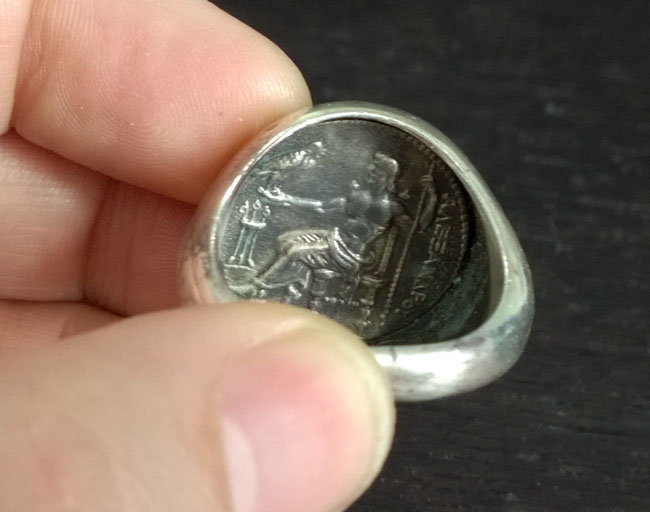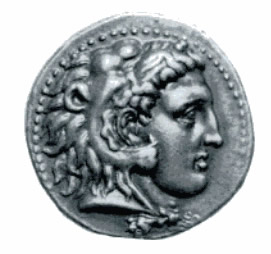Among the countless tourist shops in Athens, I stumbled across a jeweler who had the perfect decoration for my finger. The jeweler made a replica of a famous coin depicting Alexander the Great on one side, or so I thought.

The other side depicts Zeus.

After I had time to do some digging, I learned there is so much more to the coin. Here is one version of the coin in the Berlin State Coin Collection. ((J. J. Pollitt, Art in the Hellenistic Age (Cambridge: Cambridge University Press, 1986), 25.))

Issued by Alexander in 325 BC and minted in Alexandria, the image would have been how Alexander wanted to depict himself to the world. Yet, not everyone is sold that the portrait is of Alexander. The head wears a lion skin, which falls into the myth of Heracles who killed a Nemean lion and later wore it (See Edith Hamilton’s Mythology for an accessible reference on Greek myths). ((Edith Hamilton, Mythology (New York: Little, Brown, and Company, 1969), 225.)) This was nothing new, as previous Macedonian kings used the image of Heracles to promote their rule.
However, many historians have pointed to the subtle changes in appearance of Heracles on this coin that match other depictions of Alexander such as the “bulging forehead, the narrow mouth with almost pouting lips, even something of the aspiring gaze.” ((Pollitt 1986, 25-26.)) Thus, if the question is whether Alexander meant to depict Heracles or himself, the answer may simply be both.
Similarly, outside the Greek world, newly conquered regions had their own god-like heroes who slew lions. The Phoenician god Melqart was one such figure. This coin, spread across Alexander’s empire, became an instrument to promote Alexander’s rule, as well as his heroic and divine nature. ((Ibid.))
Now the coin stays on my middle finger as a solid piece of history and a great conversation starter.

